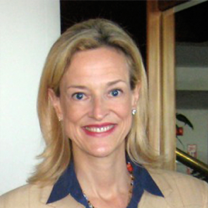
In partnership with Ragan’s PR Daily, “How We Did It” is a series featuring IPR Trustees discussing a success in their public relations career.
At Accenture, transformation is a constant.
I joined the company in the mid-’90s, and I’ve grown as it has grown. I have been fortunate to be a part of Accenture’s inspiring, ongoing transformation and have been able to draw on my roots in journalism and media relations to ask questions, keep learning, and assume increasing responsibility on dynamic teams.
This year, our chief marketing and communications officer, Amy Fuller, led the Marketing and Communications Department’s transformation to become a center of innovation while strategically driving greater brand equity and meaningful results. As part of that, I took on the role of leading global communications, and we began a redesign of the corporate communications function.
Our goals: to develop a more powerful, focused narrative to elevate our differentiation and, as stewards of the brand, to engage all our key stakeholders (clients, people, recruits, investors, influencers, etc.,) to promote and protect Accenture.
How did we do it? Reflecting on our experience, I would say it’s important to:
- Think like a journalist. Ask questions. Research trends. Be a continuous learner.
- Embrace transformation. Great companies and communications organizations are continuously innovating. Be open to new ideas, structures and strategies.
- Be a “trust builder” by supporting transparency, purpose and values-driven communications, and continuous collaboration.
- Understand and leverage data. Effective transformation is grounded in data that frames issues and opportunities and helps communicators to “see around corners.”
- Celebrate success at key phases of the transformation process. Reward broad thinking, openness and people going out of their comfort zones.
Today, our corporate communications function comprises eight integrated teams: strategy and planning; media and analyst relations; issues and crisis communications; people communications; CEO and financial communications; executive positioning; corporate initiatives; and communications for Accenture ventures and acquisitions (V&A).
Some of these areas are new. For example, our V&A team will streamline and industrialize our communications and branding for Accenture’s numerous acquisitions, which expand the capabilities we bring to clients. We also incorporated best practices for making media relations more “predictive” through deeper mining of media trends and online conversations.
We believe that the right organization, based on a culture of collaboration, leadership, value, and constant development, can enable world-class innovation.
We are already realizing the benefits of the new structure; it optimizes our global positioning, targets local relevance and impact, and builds trust through transparency and purpose. Going forward, our long-term success will depend, in part, on our ability to “see around corners” for opportunities and reputational threats, using predictive data and analytics, and working in close coordination with our social media and measurement teams.
We like to say we are creating and delivering “the new, now.”
In the years ahead, my team and I expect to look back and say, “We did it.” In playing an important role in Accenture’s latest transformation, we also will have grown professionally.
It doesn’t get any better than that.
![]()
 Stacey Jones is global communications lead at Accenture. She is also a Trustee for the Institute for Public Relations.
Stacey Jones is global communications lead at Accenture. She is also a Trustee for the Institute for Public Relations.



